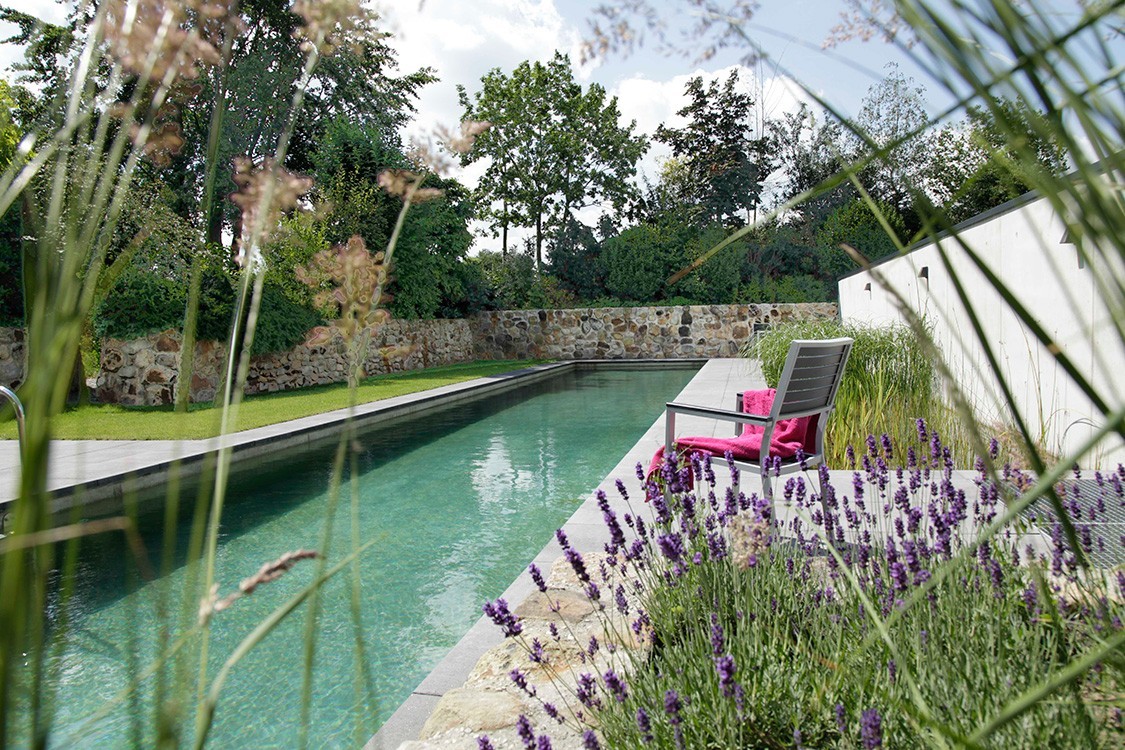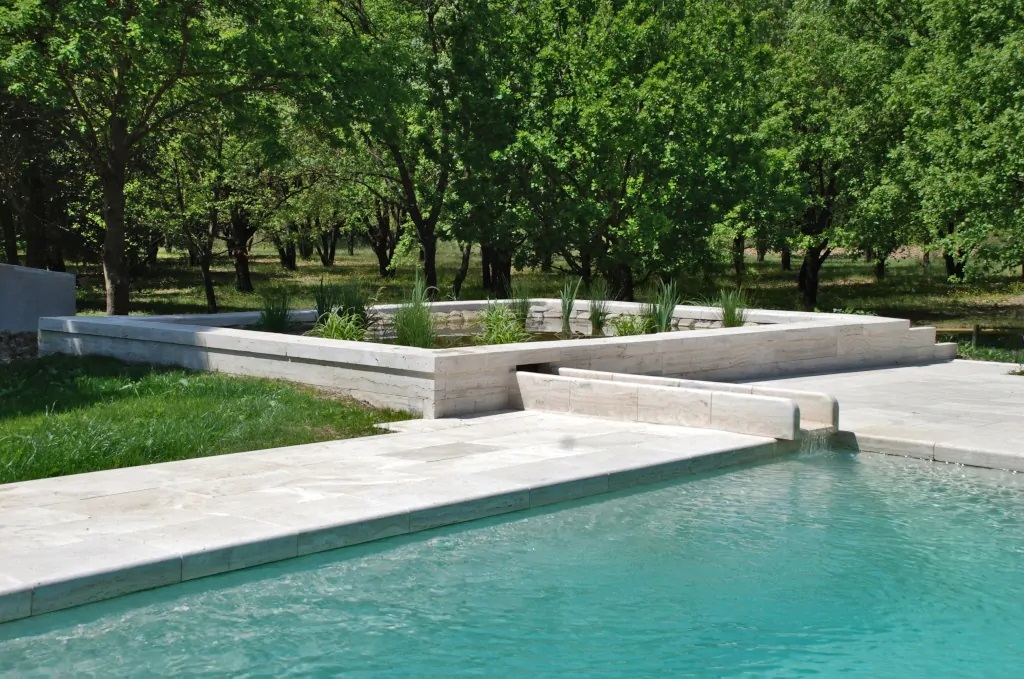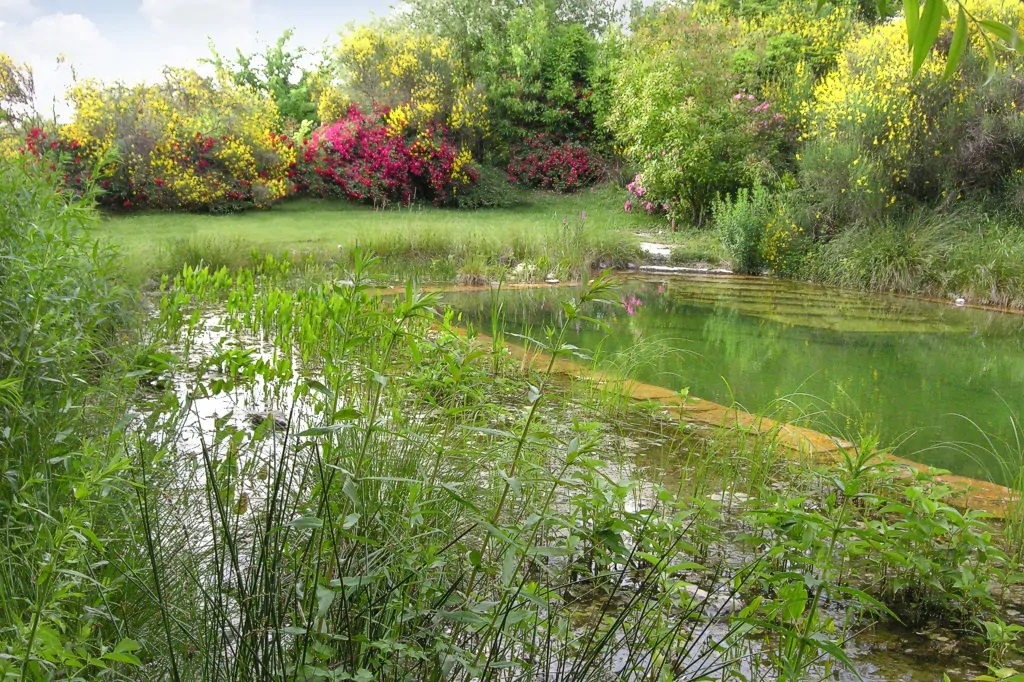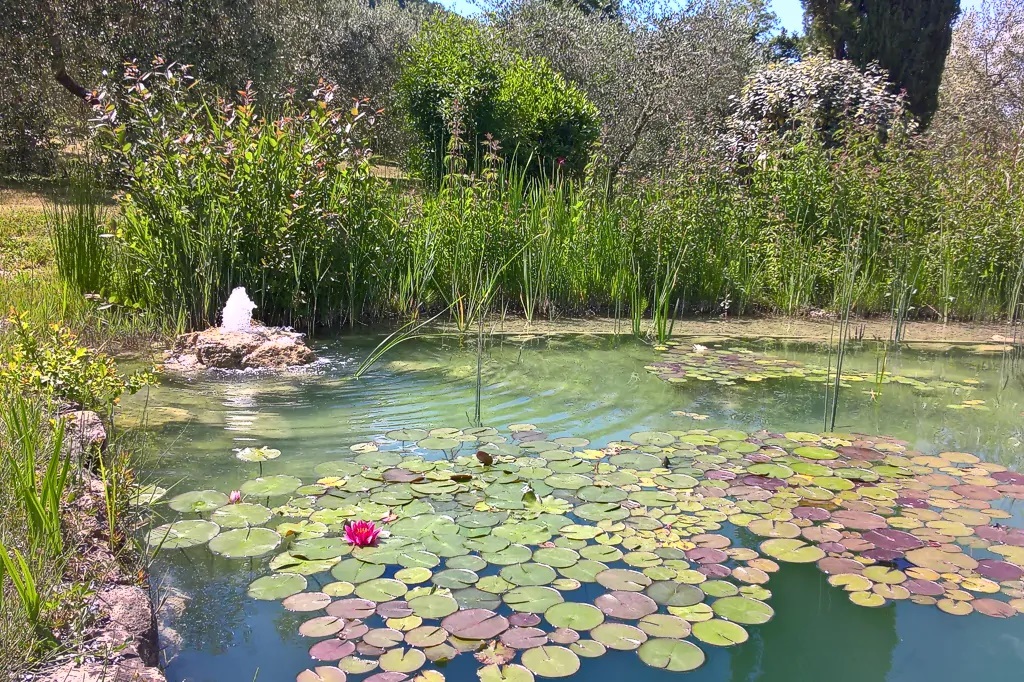Building a biolake in the garden: Let’s find out together what biopools are, how much they cost and how they work
After talking about swimming pools in the previous article “La piscina in giardino” we continue the journey of understanding the possibilities on the market. In this article, in fact, we will deal with bio-pools or bio-lakes.
What is a biolake? How does a biological pool work? Are bio lakes, bio pools and eco pools the same thing?
The bio lake is a pool of water which, instead of being purified using chemical solutions, is purified by plants and jets of water. In the bio-lake, part of the project and of the tank is dedicated to aquatic plants which, by producing oxygen and good bacteria, destroy the bad bacteria and fight the formation of algae.
Then there are different degrees of bio-lake, from the one more similar to a swimming pool in which several non-chemical methods of water purification are used, making the tank very similar to a swimming pool and the water very transparent, up to the bio-lake more similar to a a natural lake where only phytodepuration is used, perhaps with jets of water and waterfalls and where the water is not transparent despite being clean, passing through 4 different types.
For clarity of language we specify that there are many ways of calling these types of pools: bio-pools, bio-lakes and eco-pools. There may be some slight differences between one and the other, but for the purpose of this article we will consider them as a single type and call it a biolake.
What does the construction of a biolake involve: The legal aspects of a biolake in the garden
Let’s start by talking about the legal aspects. To find out if the bio-lake you have in mind will transform your home into an elegant (luxury) property, you need to speak to your municipality. In fact, every municipality has its own rules in this regard and it is therefore useless to wrap your head before having broken it.
The state legal rules, however, are basically the same as those cited in the article “La piscina in giardino”.
What is the difference between a standard pool and an eco-pool (biolake)?
Use, shape and position of the bio-lake compared to the traditional pool
A traditional swimming pool is only used in the summer, and may be covered or emptied for the rest of the year. On the other hand, a biolake always remains functional and is always beautiful in all seasons, so it remains a decorative element of your garden even when you are not using it.
The swimming pool is a single reservoir with a regular or free shape. Even the bio lake can be regular or free in shape but there is certainly both an area for swimming and a tank with aquatic plants.
The position of the plants can also vary according to the taste of the landlord. The plants can be placed in the same bathing tub, or, in an adjacent tub or even several meters away from the bathing one.
Purification, phytoremediation and maintenance of bio-lakes compared to traditional pools
In the swimming pool, chlorine and isocyanuric acid are used to purify which must always be in a certain quantity ratio to ensure that the water is disinfected but not dangerous. In a biolake, on the other hand, the water is purified thanks to aquatic plants, also creating a natural ecosystem, also from a bacteriological point of view.
Aquatic plants perform the function of phytoremediation because for photosynthesis they release oxygen into the water through their leaves and roots.
The most important difference is that compared to normal swimming pools, natural ones have a water garden which is important to keep in good condition to ensure that the water is purified. This is why it is necessary to treat them so that they stay in good health to prevent them from dying.
Finally, even if the maintenance of a natural swimming pool is a very simple thing, it is necessary to take into consideration precautions that are also common to traditional swimming pools: it is necessary to avoid the accumulation of leaves in summer and autumn and to clean the bottom of dirt.
How is a biolake built?
(according to Luciani Biolaghi lucianibiolaghi.it)
Digging is done first. Depending on the type of ground, more or less important interventions will be made to obtain a homogeneous seabed on which the non-woven fabric and a waterproof coating welded on site will rest. The more this phase is well managed, the more successful the work will be. Upstream of the construction there is obviously an accurate planning that must be done by professionals.
The tank for the plants must be at least 30% of the surface of the bathing tank (depending on the temperatures of the construction area and the number of bathers who will use the bio-lake) and the water from this tank must then reach the main tank. This takes place through a sophisticated plant with a closed circuit system.
The plants that are used are aquatic, marshy and so-called bank. If managed correctly, plants may not be changed for many years. They are usually placed to the side or upstream of the bathing area, taking advantage of any slope with streams and waterfalls. In this way the water ends up in the bathing area, which is highly oxygenated, and returns to the phytodepuration area through the technical system.
There are different species of plants that can be used for this type of pool and they are usually planted at different depths, exploiting the characteristics of each one in order to make the purification system more efficient. For this reason it is essential to rely on the technical advice of qualified experts.
In winter the plants go into vegetative rest. However, the biolake can be left open because it lives alone. The pond can freeze or be covered in snow and will still be a lookout.
How does biolake phytoremediation work?
(according to astralpool.it)
Thanks to the aquatic plants, colonies of beneficial bacteria are formed which are responsible for the phytoremediation.
Aerobic bacteria are therefore formed in the substrate in which they are planted, i.e. bacteria that need oxygen to carry out their functions.
These bacteria are called nitrosomonas, nitrobacter and nitrospira, and they are the ones that degrade polluting substances such as phosphates and nitrogenous substances into harmless substances that can be used by plants as nourishment.
Furthermore, polluting elements such as heavy metals are also absorbed by aquatic plants.
What types of bio lakes can be built in the garden?
(according to astralpool.it)
Pure natural: The water of this natural pool looks like it does in nature, therefore at times transparent and at times cloudy. There are no energy costs, or they are extremely low, and maintenance is performed periodically (for example by thinning out the green areas dedicated to plants and cleaning the bottom).
Natural: Very similar to the Pure nature model, also in this case the pool is characterized by the presence of plants. The substantial difference, however, is the presence of technology that “helps” water filtration thanks to the use of sieve filters and UV-C units which are necessary to eliminate algae, viruses and bacteria, guaranteeing a cleaner water. clear.
Clear: The Clear model also offers an experience of immersion in nature, thanks to the presence of plants and a diversified fauna. in this case the filtration system is more sophisticated than the Natural model. In practice, regular maintenance is required but a natural effect and clear water are obtained.
Crystal clear: this type of pool is defined as natural “Hybrid”. The construction technology of the pool and the filtering technique are the same as the Clear model, the CRYSTAL CLEAR model also has a filter cartridge to eliminate phosphates, one of the main algae nutrients in each pool.
Biopool: Apparently it looks like a traditional swimming pool, but it uses the filtration technology of natural pools and the removal of nutrients (thanks to the use of phosphate filters). Furthermore, the low-salt consumption hydrolysis/ionization system is installed in the technical room in the biopool pools.
How much does it cost to build a bio-pool or a bio-lake?
Construction costs are not easy to define because each job is an adventure in itself.
There are in fact many factors that influence such as the type of soil – above all – for example if it is sandy because it requires the insertion of cement and this is expensive. However, it is better to dig by hand because in this way it will be performed and prepared better for the cover.
In the case of escarpments, the same techniques used in naturalistic engineering will have to be used and this too has a cost. Therefore the plants, the materials used and the finishes can greatly influence the price, making it difficult to give estimates.
However, we can say that the turnkey cost will be at least equal if not higher than that of a swimming pool.
the Mondo del Giardino advice
If you decide to make a bio-lake in your garden and there are steps or slopes inside the bathing area, choose non-slip bottom materials so as not to incur annoying accidents.
Now on horseback! Work awaits us! Our new wonderful outdoor space is about to be born!
GOOD WORK and … if you have any questions please write to info@mondodelgiardino.com
Image sources: thanks to gb.bio.top for the cover image, salamandernaturgarten.ng, lucianibiolaghi.it for the images of the work done subtitled with his name and for the image of the social networks, swisstech and casavivagarda.com.











